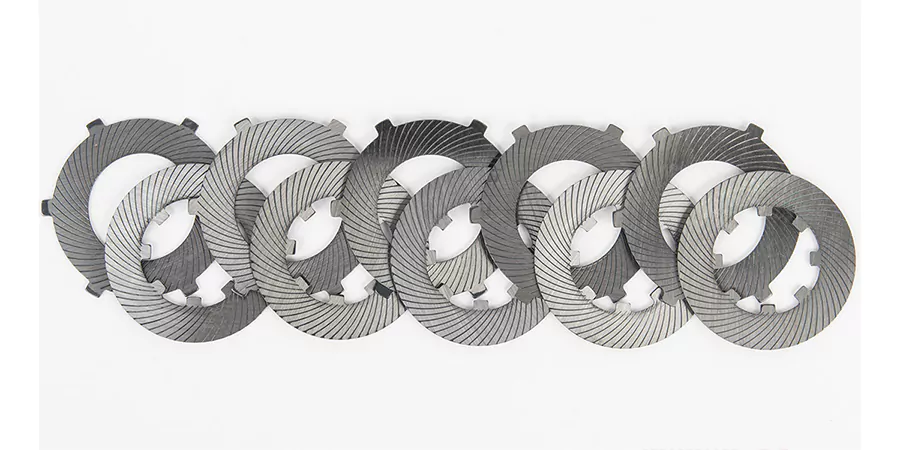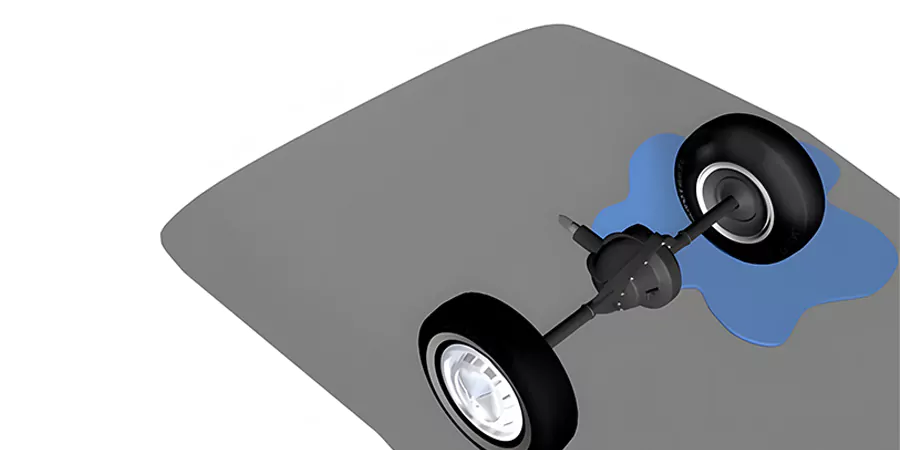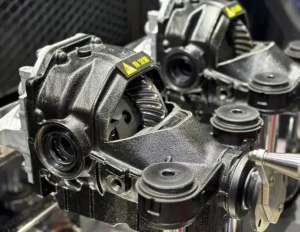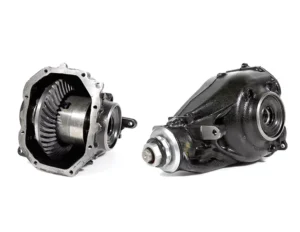The problem with open differentials is that they send power to the wheel with less friction, which causes the wheel to slip. This isn’t good when the car travels across surfaces such as ice. To solve this, we need a slightly different design that limits the slip of the wheel with less friction. This is where the limited-slip differential (LSD) comes in. The clutch-based version is probably the most common, so we will learn how this works.
Main Components of a Clutch-type Limited-Slip Differential

With the limited-slip differential, we have the same main components: the drive pinion, the ring gear, the casing, the spider gears, the side gears, and the axles. However, we do have some additional parts. Behind each side gear, we find a clutch pack, which consists of multiple layers of two different discs.
Clutch Friction Plates and Clutch Discs

We have the clutch friction plates and the clutch discs. The clutch friction plates have a special textured surface that increases friction. Part of the disc extends outwards and slots into the grooves of the differential case. When the ring gear rotates, it rotates the casing, and so the clutch friction plates will also rotate.
The clutch discs are sheets of metal with teeth around the inner edge, which slot into the splines of the side gears, interlocking the two together. When the side gear rotates, the clutch disc rotates as well. However, the clutch friction plates do not interlock with the splines of the side gears, so they will rotate around it. These two discs are stacked alternatively to form the clutch pack on each side. A spring is then inserted into the middle, providing a light pushing force, and so the side gears will slightly compress the clutch packs.
The friction material of the clutch plates grips onto the clutch discs, temporarily joining them together so they will rotate together. However, if a certain amount of force or torque is applied to the wheel, the two discs will break this temporary joint and slip past each other. When the car turns, the wheels have to change speed. This provides enough force to break the temporary joint, allowing the side gears to rotate at different speeds, although the main casing will continue to rotate at the same speed. However, when the car travels in a straight line, the friction between the clutch packs temporarily locks the side gears so they rotate at the same speed. The main casing will rotate with them and provide the pushing force.
Advantages of Limited-Slip Differentials on Slippery Surfaces

With the limited-slip differential, when a car travels across a slippery surface such as ice, the power of the engine is distributed to both wheels, giving the car some traction and allowing it to continue forward. This isn’t possible with an open differential, which would cause the car to become stuck.



